SCIENCE TALKS
TALK RECORDINGS
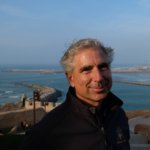 Adventures in Monitoring: Using Online Tools To Watch Louisiana’s Coast From Your Desktop
Adventures in Monitoring: Using Online Tools To Watch Louisiana’s Coast From Your Desktop
with Dr. Alex Kolker, LUMCON Associate Professor
DATE: April 9, 2020
TALK DESCRIPTION: For scientists and the public who cannot go to the coast, the coast can come to you. Over the last few decades, rapid growth of freely accessible, online data sources let scientists, students, and the public at large watch coasts change in real time. This talk will give an overview online data sources and how to access them. We will show how these resources are employed by scientists, how they can help us prepare for weather and flood events, and how they can be used people who just want to watch the dynamics and beauty of Louisiana’s coast. Get a list of websites featured in this talk by clicking here.
RECORDING: Missed this talk? Watch the recording by clicking this link.
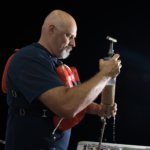
Alligators in the Abyss
with Dr. Craig McClain, LUMCON Executive Director/Associate Professor
DATE: APRIL 16, 2020
TALK DESCRIPTION: Connecting the oceans to land are numerous carbon highways. These conduits bring food from land to the ocean, supporting an abundance of life. Our group explores these carbon chains and explores some potential methods of carbon delivery to the deep ocean. At first it may seem fanciful that an alligator carcass might find its way to the deep. However, dozens of species of alligators and crocodiles are found across the globe, in high numbers, and often in coastal areas. Through either their normal migrating or foraging activities, or during flooding events, individuals may be found offshore in the ocean. If one of those individuals meets an unfortunate end, it may fall to the seafloor. Thus our experiment alligators in the abyss. In 2019, our research group placed three alligator carcasses 1.5 miles deep on the seafloor of the Gulf of Mexico in the first-ever alligator fall experiment. Each of the three alligators met a different fate.
RECORDING: Missed this talk? Watch the recording by clicking this link.

Massive Events With Microscopic-Scale Impacts
with Dr. Beth Stauffer, Assistant Professor, University of Louisiana at Lafayette
DATE: APRIL 23, 2020
TALK DESCRIPTION:Massive, extreme events like hurricanes or large river flooding impact coastal ecosystems and communities in ways that we can see and often directly experience. However, these events also have effects on microscopic organisms at the base of marine food webs – the phytoplankton – which have the potential to significantly disrupt ecosystem-scale processes in which these organisms are intimately involved. My research group has studied the effects of Hurricane Harvey in 2017 and the Mississippi River flood in 2019 on phytoplankton communities and their associated food webs in the coastal ocean and Louisiana’s estuaries. Through this research, we are continuing to build our understanding of how such massive events impact these important microscopic organisms and the food webs they support.
RECORDING: Missed this talk?Watch the recording by clicking this link.

Wonderfully Weird World of Sponges
with Dr. Stephanie Archer, LUMCON Assistant Professor
DATE: April 30, 2020
TALK DESCRIPTION: Sponges are one of the oldest groups of animals on the planet. They occur in nearly every aquatic ecosystem, from freshwater lakes and rivers to the most extreme environments in the deep sea. Yet, most people can’t confidently tell you whether sponges are, in fact, animals or plants. In this talk I will introduce what sponges are and show you some of the crazy things these animals can do. I’ll also talk about how important sponges are in many marine ecosystems and why we should probably pay more attention to these seemingly boring creatures. Click here to listen to “Sponger Money” by George Symonette which was featured in this talk.
RECORDING: Miss this talk? Watch the recording by clicking this link.
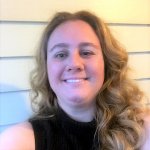
10 Ways Microscopic Ocean Animals Are Fascinating
with Dr. Kelly Robinson, Assistant Professor, University of Louisiana at Lafayette
DATE: May 7, 2020
TALK DESCRIPTION: In a bucket of seawater there are tens to hundreds of microscopic, drifting animals called zooplankton. These small wanderers come in a wide variety of shapes and sizes and taxonomic diversity. Some flit through the water on ethereal wings like a hummingbird while others dart at incredible speeds (1000 body lengths per second!) through a molasses-like liquid. Zooplankton are amazing in so many ways; not to mention how some of them grow up to be delicious food (crab cakes anyone?). Join a virtual exploration of how these microscopic, ocean monsters are among the most fascinating animals on Earth.
REGISTRATION INFORMATION: Did you miss this talk? Watch the recording by clicking this link.
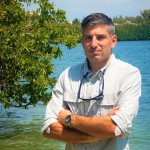
Stay in school! The whys and hows of fish schooling behavior and what we can learn from them
with Dr. Guillaume Rieucau, LUMCON Assistant Professor
DATE: May 14, 2020
TALK DESCRIPTION: During this presentation, I will invite you to dive with me in the fascinating world of collective behavior of marine organisms. I will present the research conducted with many of my colleagues on animal social behavior and collective reactions. Over the years as a marine biologist, I have explored how predation, environmental conditions, human disturbances, and fishery activities affect the behavior of ecologically and economically important fish species in marine and estuarine ecosystems. Finally, I will address what we can learn from the behavioral reactions of wild group-living marine animals and use this knowledge to develop sound conservation plans.
RECORDING: Did you miss this talk? Watch the recording by clicking this link.
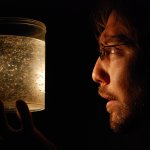
What is toxicology and why should I care? – Connections between oil and fish reproduction
with Dr. Chris Green, Associate Professor, Louisiana State University
DATE: May 21, 2020
TALK DESCRIPTION: What do you think of when you hear the word, “Toxicology”? Ten years ago 5 million barrels of oil flowed into the Gulf of Mexico from the tragedy aboard the Deepwater Horizon oil rig. The effects of this event and other similar releases have been studied for the various short term and long term consequences on the surrounding ecosystem. This talk will explore the science of environmental toxicology and the history behind this discipline. Taking a look inside fishes that were potentially exposed to crude oil, we will discuss research findings that show how these substances alter the ability of fishes to reproduce.
RECORDING: Did you miss this talk? You can watch the recording by clicking this link.
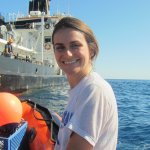
Farming Wild: a look at aquaculture innovation in the US
with Dr. Abigail Bockus, LUMCON Assistant Professor
DATE: May 28, 2020
TALK DESCRIPTION: Have you ever wondered where your seafood comes from? Or what an underwater farm looks like? Wait, you haven’t? Even better! Join me this Thursday as I talk about one of my all-time favorite topics, aquaculture. I’ll share some of the ways scientists are innovating how we farm, where we farm, and what we feed our farmed aquatic species. We’ll explore success stories and some of the cutting-edge techniques being used to provide nutritious food and protect our planet at the same time.
RECORDING: Did you miss this talk? You can watch the recording by clicking this link.
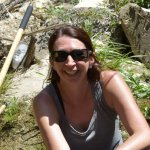
The Louisiana Freshwater Sponge Survey Project: Identifying, Characterizing, and Building a Molecular Database
with Dr. Mary Miller, Associate Professor of Biology, Baton Rouge Community College,
DATE: June 4, 2020
TALK DESCRIPTION: Since the summer of 2019, Dr. Miller and her team of BRCC students have been surveying the Louisiana freshwater sponge population. This is the first extensive survey conducted since 1968. Join Dr. Miller as she shares her journey in the world of “sponge hunting,” the progress her team has made in reporting their findings, and how you can be involved in locating freshwater sponges too!
RECORDING: Did you miss this talk? You can watch the recording by clicking this link.
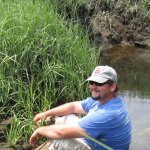 The Truest Big Fish Story Ever Told
The Truest Big Fish Story Ever Told
with Dr. James Nelson, Endowed Professor of Environmental Biology, University of Louisiana at Lafayette
DATE: June 11, 2020
TALK DESCRIPTION: The Gulf of Mexico lures anglers from all over the world with hopes of hooking a “big one” and having an epic battle that culminates in with a triumphant snapshot they can hang on the wall and lie about for the rest of their days. Top of the list of those dream fish are groupers, prized for their hulking size and tasty meat. What do we know about these incredible fish beyond the snapshots and fried vacation sandwiches? I want to tell you about one of my favorites, the Gag grouper. Its incredible life story takes it from ocean plankton to seagrass beds to the deep reefs of the Gulf of Mexico shelf. Learning about this fish taught me there are no boundaries in the ocean and if we want to continue to use the natural resources of the Gulf we all have a role to play in maintaining this incredible ecosystem.
RECORDING: Did you miss this talk? You can watch the recording by clicking this link.
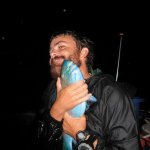
Let’s talk about talking fish
with Dr. Kelly Boyle, Assistant Professor-Research, University of New Orleans
DATE: June 18, 2020
TALK DESCRIPTION: Many people are surprised to learn that sound is important to fishes, but, in fact, fish have a well-developed sense of hearing and many fish species use sound to communicate with one another. There are numerous ways that fishes produce sound underwater and these mechanisms vary by species. In some environments, fish choruses produce a soundscape like birds in forests and frogs along the edge of a pond. Vocal fishes use sounds to attract mates, chase competitors out of territories, defend nests, and startle potential predators. I will talk about how different fishes produce sounds and why sound may be important for both vocal and silent fish species. I will also discuss how we study hearing and sound production in fishes and why it is important to study the impact of human-made noise on fish populations. Click here to visit the Discovery of Sound in the Sea website.
RECORDING: Did you miss this talk? You can watch the recording by clicking this link.
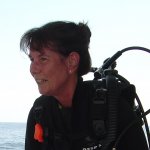 From Minnesota to Station C6B: ‘Dead Zone’ in the Gulf of Mexico
From Minnesota to Station C6B: ‘Dead Zone’ in the Gulf of Mexico
with Dr. Nancy N. Rabalais, LUMCON Distinguished Research Professor/
LSU Professor, Department of Oceanography and Coastal Sciences
DATE: June 25, 2020
TALK DESCRIPTION: The coastal waters adjacent to the Mississippi River delta and offshore of Louisiana is the location of an area commonly called the ‘Dead Zone.’ This area becomes depleted in oxygen each spring through summer, making the bottom waters unsuitable for fish and crabs. Stretching along the shore for an area the size of the state of New Jersey, the low oxygen is a symptom of an unhealthy coastal ecosystem and a hazard for commercial and recreational fisheries. The major source of the problem is the runoff of nitrogen and phosphorus from the Mississippi River basin, and an increase in N and P inputs since the 1950s. Dr. Rabalais will discuss the causes and consequences of areas of low oxygen, the linkage with Mississippi River water quality, and possible solutions.
RECORDING: Did you miss this talk? You can watch the recording by clicking this link.
 Sea through the eyes of a marine botanist
Sea through the eyes of a marine botanist
with Dr. Erin Cox, Assistant Professor, University of New Orleans
DATE: July 16, 2020
TALK DESCRIPTION: Plants are the foundation of productive, bountiful coastal ecosystems. These marine plants include intricate microscopic organisms, colorful seaweeds, and green underwater ‘grasses’ which all rely on photosynthesis- the process of harvesting light-energy for food. In addition, plants are important because they provide refuge and food for animals such as crabs, fish, and shrimp that humans consume, and they protect the coast from storm surge and land loss. Therefore, it is alarming that there have been reports of plant decline or blooms of their growth linked to human alterations of the water quality (e.g. temperature, light, nutrients). Furthermore, effects on the plants often cascade to negatively affect other animals that depend upon them. In this talk, I will give a brief background on marine plants and I will discuss the role of plants in supporting production at shallow artificial reefs and seagrass beds located within the northern Gulf of Mexico. Lastly, I will discuss how changing ocean chemistry will affect seagrass beds while demonstrating a technical system that allows for underwater manipulations.
RECORDING: Did you miss this talk? You can watch the recording by clicking this link.
 In search of biological carbon fates in the deep ocean: Technological advances to chase down entropy & negentropy in the ocean
In search of biological carbon fates in the deep ocean: Technological advances to chase down entropy & negentropy in the ocean
with Dr. Clifton Nunnally, LUMCON Research Scientist
DATE: July 23, 2020
TALK DESCRIPTION: The deep ocean is full of the unknown creatures and fantastic new habitats await discovery. While we continue to build our knowledge about deep-sea ecosystems, it is clear that food/carbon/energy that descends into the depths is sequestered on a geological time scale. What processes make the deep-sea an excellent final resting place for that energy is a very open ended question. How does carbon move through the food chain? Who benefits when carbon is fresh versus old? How do large,food falls impact biodiversity and physiology? Many questions but with one core goal, “follow the food.” Biological uptake of carbon is the movement of energy from the environment into organisms and decreases the universal increase of entropy, thus a negentropic activity. Can the long residence time, physical distance and inhibited chemical capacity in the deep ocean help us solve the problem of excess carbon in our atmosphere?
RECORDING: Did you miss this talk? You can watch the recording of this talk by clicking this link.
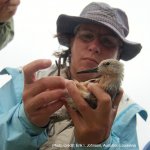 OH the places you will go! Connecting geographies through a migratory shorebird
OH the places you will go! Connecting geographies through a migratory shorebird
with Delaina LeBlanc, Migratory Birds Coordinator, Barataria-Terrebonne National Estuary (BTNEP)
DATE: July 30, 2020
TALK DESCRIPTION: More than 400 bird species rely on the Gulf of Mexico throughout the year. Some are year-round residents; some are seasonal and either breed or winter here, and some rely on the Louisiana coast as an important stop-over site to refuel and rest during migration. Each spring, a robin sized sandpiper begins to arrive and assemble in large groups on the beaches of Grand Isle. The rufa Red Knot (Calidris canutus rufa) currently in decline, is listed as threatened under the Endangered Species Act in the United States. In 2014, BTNEP became part of a collaborative research effort to better understand the status of the imperiled Red Knot in Louisiana. Mysteries of red knot movements have been uncovered using a variety of tracking devices.
RECORDING: Did you miss this talk? You can watch the recording by clicking this link.
 Trends in Global Shark Attacks
Trends in Global Shark Attacks
with Dr. Steve Midway, Assistant Professor, Louisiana State University
DATE: August 6, 2020
TALK DESCRIPTION: Shark attacks are a global phenomenon that attracts widespread attention and publicity, often with negative outcomes for shark populations. Despite the widespread perceptions of danger, rates of shark attacks vary over space and time. We found that global shark attack rates are low, yet variable across global regions and over decades. Countries with low populations were found to have the highest rates of attack, while countries with high populations (U.S.A., Australia, South Africa) tended to have overall low attack rates, but also much more interannual variability. From the 1960s to the present, countries with the highest populations tended to have increased attack rates. Ultimately, shark attack risk is driven by local conditions (e.g., time of day, species presence); however, a global-scale understanding of attack rates helps place risk into perspective and may contribute to a more scientifically grounded discussion of sharks, and their management and conservation. Read the paper on PLOS ONE by clicking this link.
RECORDING: Did you miss this talk? You can watch the recording by clicking this link.
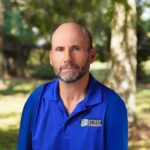 Bayou Folse Watershed Restoration
Bayou Folse Watershed Restoration
with Dr. Andrew Barron, Senior Water Resources Program Coordinator and Quality Assurance Manager,
Barataria-Terrebonne National Estuary Program (BTNEP)
DATE: August 20, 2020
TALK DESCRIPTION: This presentation provides a brief background for the BTNEP program and discusses the work that the BTNEP staff has been conducting for the last four years in the Bayou Folse Watershed. Bayou Folse is a highly impaired coastal watershed. Boundaries for the watershed include Thibodaux, La in the north, and Company Canal near Lockport, La, in the south. The watershed contains Lake Fields, a very popular local waterbody for recreation. A combination of forced drainage; malfunctioning home sewage systems or onsite sewage disposal systems (OSDS); and natural conditions in the watershed cause consistent problems with water quality. BTNEP collects water quality data, conducts educational events, and has assembled a partnership of public and private entities to improve and restore water quality in the watershed.
RECORDING: Did you miss this talk? You can watch the recording by clicking this link.
 Remote sensing application in monitoring coastal water quality
Remote sensing application in monitoring coastal water quality
with Dr. Bingqing Liu, Postdoctoral Researcher and Deputy Director of RESTORE Act Center of Excellence for Louisiana, The Water Institute of the Gulf.
DATE: September 3, 2020
TALK DESCRIPTION: Estuaries and coastal oceans represent the dynamic interface between land and the open ocean, that experience both anthropogenic and natural stressors. Coastal development in the northern Gulf of Mexico contributes significantly to changes in water quality from inputs of primarily nitrogen and phosphorous that originate from urban and agricultural runoff. Satellites as remote sensing techniques have been found to be valuable tools to provide indicators of water quality in coastal environments that could not be obtained using traditional field sampling methods. Dr. Liu will discuss how the remotely sensed information can be used to assess environmental conditions for understanding the cumulative effects of human development and natural events, including changes in land cover, on coastal water quality.
RECORDING: Did you miss this talk? You can watch the recording by clicking this link.
 Oil in the water: The science of spills
Oil in the water: The science of spills
with Dr. Emily Maung-Douglass, Oil Spill Science Outreach Specialist, Louisiana Sea Grant
DATE: September 17, 2020
TALK DESCRIPTION: Oil spills and their impacts are the focus of many scientific studies and a hot topic of interest in communities along the coast and elsewhere. In this presentation, I will share insights on a few offshore, oil spill clean-up methods and also discuss how some animals cope with exposure to oil.
RECORDING: Did you miss this talk? You can watch the recording by clicking this link.

Coastal ecosystem complexity and connectivity: What have we learned from the Deepwater Horizon Oil Spill?
with Dr. Brian Roberts, LUMCON Associate Director of Science/Associate Professor
DATE: October 1, 2020
TALK DESCRIPTION: Ecosystems are complex with many components that directly and indirectly influence other organisms and processes of the whole system. In addition, many ecosystems are exposed to a multitude of stressors that can often make it different to identify the impact a specific disturbance has on the system. This is clearly the case for coastal wetlands of Louisiana that received extensive oiling following the Deepwater Horizon oil spill. In this talk, I will summarize some of the research conducted by our research team and others throughout the Gulf to provide a holistic overview of the impacts of the oil spill on coastal wetlands. I will highlight the use of large-scale manipulation experiments using marsh mesocosms to control for these multiple stressors, enabling the direct assessment of oil spill impacts on salt marshes of coastal Louisiana.
RECORDING: Did you miss this talk? You can watch the recording by clicking this link.
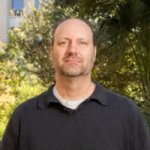 Sinking Tide: A Novel Formulation to Flocculate, Sink, and Kill the Organism Responsible for ‘Red Tide’
Sinking Tide: A Novel Formulation to Flocculate, Sink, and Kill the Organism Responsible for ‘Red Tide’
with Dr. Tim McLean, Senior Professor of the Practice, Tulane University
DATE: October 15, 2020
TALK DESCRIPTION: The frequency, magnitude, and severity of harmful algal blooms in the Gulf of Mexico, also colloquially referred to as ‘red tides’, have been worsening in recent years. In the absence of effective preventative measures, efforts to disrupt the blooms when they occur are intensifying. Flocculating agents such as clays or chemicals such as copper sulfate have been used in the past with either little success or widespread non-target toxicity. Adapting technology developed for trapping oil, a molecularly-thin metal phenolic network has shown promise in effectively flocculating and sinking several microalgal species. Coupled with nanoscale clay tubes to trap and then slowly release algicides within the flocs, we hope to create an effective red tide removal formulation that can be applied to the surface waters during bloom events.
RECORDING: Did you miss this talk? You can watch the recording by clicking this link.
 An Overview of the History and Breadth of Wetland Management (with a focus on coastal Louisiana)
An Overview of the History and Breadth of Wetland Management (with a focus on coastal Louisiana)
with Dr. Andy Nyman, Professor, Louisiana State University
DATE: November 12, 2020
TALK DESCRIPTION: In pristine landscapes, management would be unnecessary to sustain natural wetland conditions but in highly humanized landscapes, management is needed to make wetlands more natural, more productive, and less likely to be developed. Wetland management apparently was developed in the early 1900s from prehistoric technology used to drain wetlands. Management drove research, and vice versa, initially to benefit ducks but to benefit multiple wetland functions by the end of the 1900s. Management and its associated protection from direct and indirect human actions are expensive. Thus, income from forestry, wildlife, fishing and carbon credits might partly support management and slow wetland losses. Such income will only delay the inevitable, however, if human populations do not stabilize.
RECORDING: Did you miss this talk? You can watch the recording by clicking this link.
 Love’em or hate’em, oysters are shucking amazing!
Love’em or hate’em, oysters are shucking amazing!
with Dr. Megan La Peyre, Research Biologist U.S.G.S Louisiana Fish and Wildlife Cooperative Research Unit, and adjunct professor with the School of Renewable Natural Resources, LSU AgCenter
DATE: December 10, 2020
TALK DESCRIPTION: The eastern oyster, Crassostrea virginica, supports a productive fishery, provides unique and complex hard-bottom habitat, and is a cultural icon in coastal Louisiana. Cherished by some, and despised by others as a food item, oysters have been feeding humans since at least Roman times. Regardless of how you view their culinary delights, oysters are fascinating organisms – understanding how they are able to survive and adapt to constantly changing water conditions remains key to ensuring they are around in the future. We will explore some cool and interesting facts about oysters, how understanding oysters helps us ensure we always have plenty to eat, and discuss why oysters are so important in our efforts to maintain healthy coastal waters.
RECORDING: Did you miss this talk? You can watch the recording by clicking this link.
 An Eel-like Robot for Naval Research
An Eel-like Robot for Naval Research
with Dr. Brandon Taravella (UNO) and Dr. Shivank Srivastava (UNO)
BROADCAST DATE: April 7, 2022
DESCRIPTION: The modern naval warfare has seen an increment in combat activity in littoral and riverine environments, which has led to increase interest of U.S Navy in autonomous underwater vehicles (AUVs). These AUVs will accomplish the mission of intelligence, surveillance and reconnaissance in hazardous shallow water areas without putting the navy personnel in harm’s way. One such ongoing research project at University of New Orleans (UNO) concerns development an eel-like propulsor/robot, built at UNO under research grant from Office of Naval Research, which can eventually meet some special Naval and maritime objective. The research conducted has been experimental and numerical on a so-called “wakeless” swimming theory. We will discuss the design and construction of the robot that we used for our experiments along with how the experiments that we conducted to analyze the performance of the eel-like robot as a propulsor. A brief discussion of the results will be provided. We will also discuss certain outreach activities that we have been involved in for middle and high school students that stemmed from this project.
RECORDING: You can watch a recording of this talk by clicking this link. You will be redirected to our YouTube channel.
 Exploring the Midwater Ocean with Mesobot
Exploring the Midwater Ocean with Mesobot
with Dr. Dana R. Yoerger, Senior Scientist, Woods Hole Oceanographic Institution
BROADCAST DATE: April 21, 2022
TALK DESCRIPTION: The mesopelagic or midwater ocean is defined as the region that extends below the depths where light levels can support photosynthesis to the depths where light from the surface is essentially extinct, a range of approximately 100 to 1000m. Because the light is dim at best, the region is often called “the twilight zone”. The twilight zone is home to an abundant and diverse biomass. As such, the midwater ocean plays a key role in the global carbon cycle thus influencing our climate. In this talk, we describe results from our midwater robot Mesobot. Specific capabilities described include video survey, automated tracking of animals, sampling environmental DNA, measuring the ambient light field, and automatically following levels of constant light or isolumes.
RECORDING: Watch the recording by clicking this link. You will be redirected to YouTube in a new tab.
 This is not planet Earth: Advancing our tools to study the deep sea, and what we’ve learned about this ocean world
This is not planet Earth: Advancing our tools to study the deep sea, and what we’ve learned about this ocean world
with Dr. Peter Girguis, Professor, Harvard University
DATE: May 12, 2022
TALK DESCRIPTION: The very first “ocean world life detection” mission took place on board the HMS Challenger in 1872, when scientists and crew sailed for four years and produced the first comprehensive survey of Earth’s ocean – from sea surface to sea floor. Today, ocean scientists explore the ocean through a combination of human-operated and autonomous instruments. Space scientists are also rapidly developing technologies required for missions to other worlds, including ocean worlds. We suggest that fostering a rich and extensive collaboration among ocean and space scientists is critical if we are to advance our understanding of Earth’s ocean as well as other ocean worlds such as Enceladus and Europa. Here I will present some of the latest technological developments -as well as the lessons- from exploring our own inner space. We will also present highlights of our recent efforts that examine the relationships among abiotic and biological processes in our ocean.
RECORDING: Missed the talk? No worries, watch the recording by clicking this link.
 Why are there colors in the ocean?
Why are there colors in the ocean?
with Dr. Derya Akkaynak
BROADCAST DATE: May 26, 2022
TALK DESCRIPTION: The color of ocean water provides us tremendous insights regarding the properties of the particles in the water. For example, using satellites that sense ocean color, we can monitor the worldwide concentration of phytoplankton—tiny organisms in the water column that produce food for everything else in the ocean to eat. That ocean water has color, however, is precisely what is holding us back from unveiling the colors of everything else, i.e., the colors of the ocean flora, fauna, and the unique habitats that host them. Why does anything in the ocean have color, if that color is to be masked by the color of the water? What would we learn if we could survey the true colors of everything in the ocean? Today I will tell you what’s holding us back from doing that.
RECORDING: Did you miss the talk? No worries, you can watch the recording by clicking this link.
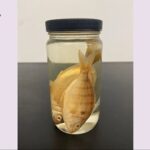 LUMCON’s Natural History Collection
LUMCON’s Natural History Collection
with Dr. Brianne Du Clos
BROADCAST DATE: August 15, 2024
TALK DESCRIPTION: Dr. Brianne Du Clos discussed the thousands of specimens in our natural history collection, new techniques used by natural history collections, and the work done to update our collection and redefine it for the future.
RECORDING: Did you miss the talk? No worries, you can watch the recording by clicking this link.
